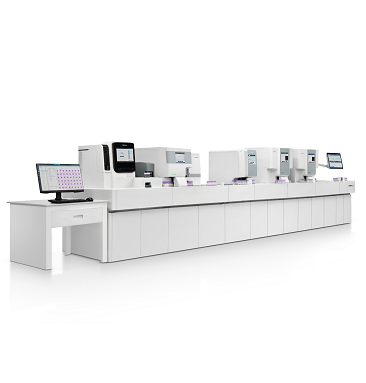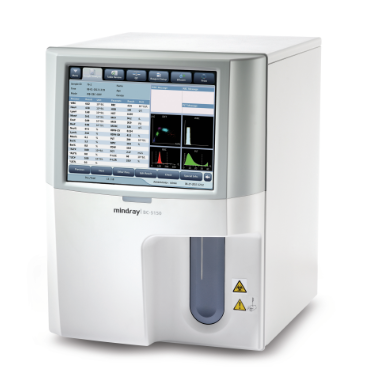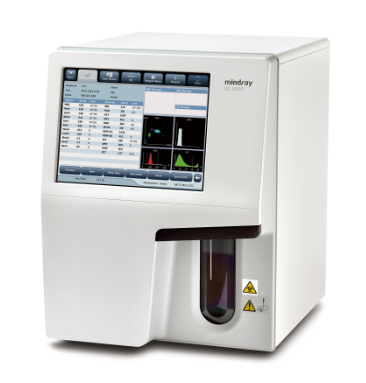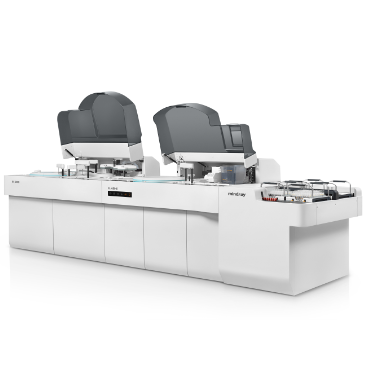Leveraging Lab Efficiency in In-Vitro Diagnostics

Simpler Workflow, Less Pressure

Industrial Designer
A streamlined workflow for capillary blood sampling
Children are a special group of patients. They require capillary blood sampling rather than traditional venipuncture, since it is less invasive and more tolerable for them. On top of routine CBC blood tests, additional tests such as CRP are often required as well. Due to the large number of pediatric patients, children’s hospital labs in China often face high capillary blood sample volumes, high peak sample volumes, and high CRP detection volumes. According to the team’s research, healthcare providers in charge of blood draws needed to write the serial numbers of patients out by hand, which was time-consuming. For healthcare providers in charge of blood testing, matching these handwritten serial numbers with blood samples was also slow and prone to error. When it came to capillary blood sample mixing, complicated manual procedures resulted in a heavy workload and poor repeatability. The same went for sample analysis – complicated analyzing procedures led to a heavy workload and low efficiency. As the number of samples grew, the results were delayed and the complaints came in.

To better understand the challenges faced by medical professionals and find possible solutions, the design team entered the hospital labs and closely observed the daily routine of medical professionals. Based on observations in the clinical setting, the design team created archetypes of different phases in the IVD workflow for medical professionals, and analyzed their behavior, needs, and challenges. Having intensively studied the lab’s challenges, the team constructed a streamlined workflow for capillary blood sampling covering the entire clinical journey, implementing automation to simplify the process. The team developed standardized biotic mixing technology that helped relieve the workload and deliver more reliable test results. Auto-loading and auto-sampling also made the workflow more efficient.

Adapting Well to the Workspace

Industrial Designer

Compact machine for smaller space
Bulky and expensive 5-part hematology analyzers present a formidable challenge to labs around the world. Laboratory managers must make objective decisions regarding the most cost-effective laboratory instrumentation, bearing in mind the space layout, reagents, and staff costs to meet a relatively high operational efficiency level. After substantial research and development work over the years, the Mindray design team integrated sophisticated optical, liquid flow, and electronic systems into the BC-5000, the “cute” 5-part auto hematology analyzer, whose size is reduced to 2/3 of a regular device. Meanwhile, the team designed a 10.4-inch color touch screen with a wide viewing angle to take up as little space as possible, enabling operations without an external PC. It avoids errors caused by testers in back-and-forth operations and data checks, thereby dramatically improving work efficiency.
One is better than two
During the visits to children’s hospitals, the design team noticed that the limited lab space was often crowded with different devices and different samples. Lab staff had to run capillary samples separately on the hematology analyzer and CRP analyzer. Operating multiple stand-alone analyzers and slide makers during peak times meant that many medical staff had to spend hours on the devices without a break. To fully optimize the lab layout, the team designed the BC-7500 CRP as a high-speed, integrated CBC+CRP analyzer. Medical staff can now put the samples in the analyzer, and it performs both CBC and CRP tests without any manual monitoring or intervention. Fewer bulky machines in the room and simplified workflows mean that staff are freed up from repetitive tasks, and can serve more patients and carry out more sophisticated work.
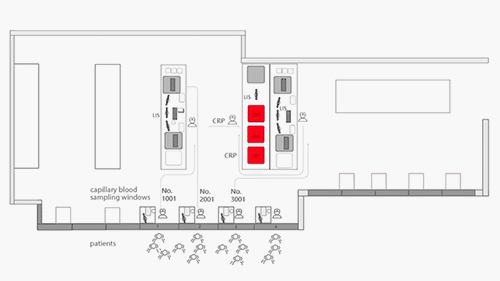

The same height as you
After visiting different labs across the globe, the design team realized that the design of many IVD devices on the market needed improvement in terms of ergonomic comfort and safety, especially for women. Female lab staff in Asia, for instance, have a relatively smaller body size and can struggle to lift the large-size lids of bulky chemistry analyzers. To make the lab staff’s daily work more comfortable, the design team altered the chemistry analyzer's lid. Instead of lifting the entire lid, lab staff only need to “half-open” the lid, reducing the physical effort required and saving time for more complex tasks.
Customized solution for optimal efficiency
Mindray’s design team often face thorny problems concerning lab space conditions. The space of some labs was so limited, that it seemed impossible to install both the cellular analysis lines required. They needed to come up with a better solution under the existing space conditions in the laboratory. After repeatedly simulating the working path from sample loading to microscopy, the design team came up with customized solutions: parallel the cellular analysis lines facing the same direction, with tracks bending around walls and pillars, etc. After repeated verification, these solutions finally created the most space-saving workflow, allowing inspectors to process samples on two lines at the same time.
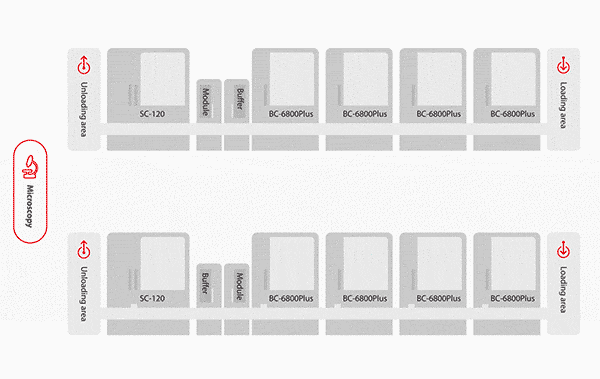

Compact machine for smaller space
Bulky and expensive 5-part hematology analyzers present a formidable challenge to labs around the world. Laboratory managers must make objective decisions regarding the most cost-effective laboratory instrumentation, bearing in mind the space layout, reagents, and staff costs to meet a relatively high operational efficiency level. After substantial research and development work over a number of years, the Mindray design team integrated sophisticated optical, liquid flow, and electronic systems into the BC-5000, the “cute” 5-part auto hematology analyzer, whose the size is reduced to 2/3 of a regular device. Merely compressing the analyzer itself did not suffice. To take up as little space as possible, the team designed a 10.4-inch intuitive interface with a wide viewing angle, enabling the laboratory technicians to complete instrument operations on the color touch screen without having to use an external PC. This design avoids errors caused by testers in back-and-forth operations and data checks, thereby dramatically improving work efficiency.
One is better than two
During the visits to children’s hospitals, the design team noticed that the limited lab space was often crowded with different devices and different samples. Lab staff had to run capillary samples separately on the hematology analyzer and CRP analyzer. Operating multiple stand-alone analyzers and slide makers during peak times meant that many medical staff had to spend hours on the devices without a break. To fully optimize the lab layout, the team designed the BC-7500 CRP as a high-speed, integrated CBC+CRP analyzer. Medical staff can now put the samples in the analyzer, and it performs both CBC and CRP tests without any manual monitoring or intervention. Fewer bulky machines in the room and simplified workflows mean that staff are freed up from repetitive tasks, and can serve more patients and carry out more sophisticated work.


The same height as you
After visiting different labs across the globe, the design team realized that the design of many IVD devices on the market needed improvement in terms of ergonomic comfort and safety, especially for women. Female lab staff in Asia, for instance, have a relatively smaller body size and can struggle to lift the large-size lids of bulky chemistry analyzers. To make the lab staff’s daily work more comfortable, the design team altered the chemistry analyzer's lid. Instead of lifting the entire lid, lab staff only need to “half-open” the lid, reducing the physical effort required and saving time for more complex tasks.
Customized solution for optimal efficiency
Mindray’s design team often face thorny problems concerning lab space conditions. The space of some labs was so limited, that it seemed impossible to install both cellular analysis lines required. They needed to come up with a better solution under the existing space conditions in the laboratory. After repeatedly simulating the working path from sample loading to microscopy, the design team came up with customized solutions: parallel the cellular analysis lines facing the same direction, with tracks bending around walls and pillars, etc. After repeated verification, these solutions finally created the most space-saving workflow, allowing inspectors to process samples on two lines at the same time.

Through close collaboration with medical professionals and Mindray R&D teams, the Mindray design team is able to optimize the user experience. With a human-centric design philosophy, Mindray will continue designing IVD devices that elevate human-device interaction and enhance workflows, easing the burdens on healthcare providers and enabling them to deliver better care to patients.
